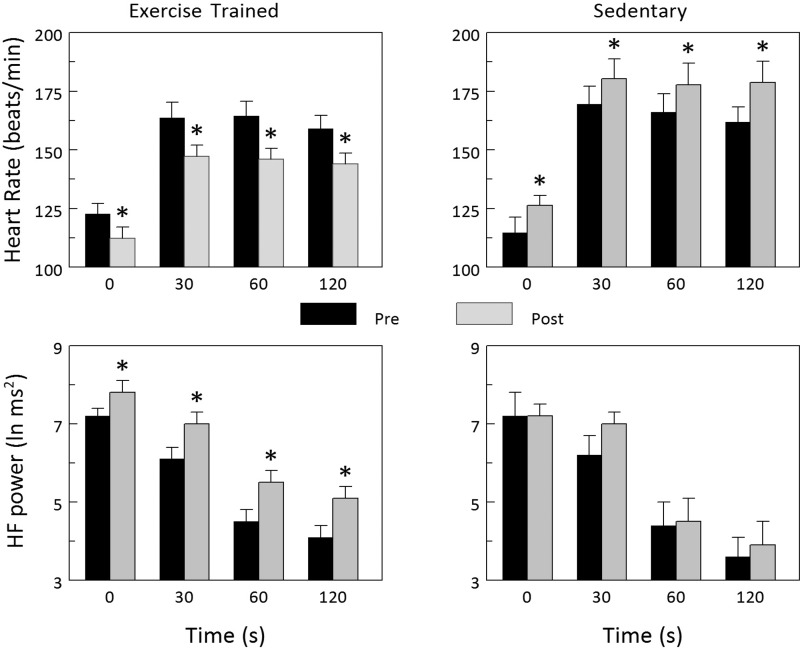Fig. 2.
Effect of exercise training on HR and HRV responses to the onset of submaximal exercise. The onset of exercise elicited significantly smaller increases in HR that were accompanied by significantly smaller reductions in the high-frequency component of the R-R interval variability (HF power) after completion of the 10- to 12-wk exercise training protocol. In contrast, exercise onset elicited significantly larger increases in HR at the end of the sedentary period. These data are consistent with either an enhanced parasympathetic neural regulation or reduced sympathetic neural response to exercise onset in exercise-trained animals, whereas the exaggerated response to exercise onset in the sedentary animals may reflect an enhanced cardiac parasympathetic withdrawal, or augmented sympathetic neural response to the exercise (perhaps due to deconditioning), or both. Data were averaged over each 30-s period beginning with the last 30 s before exercise onset (time = 0) and for the first 120 s during exercise. *P < 0.01 Pre vs. Post values.

